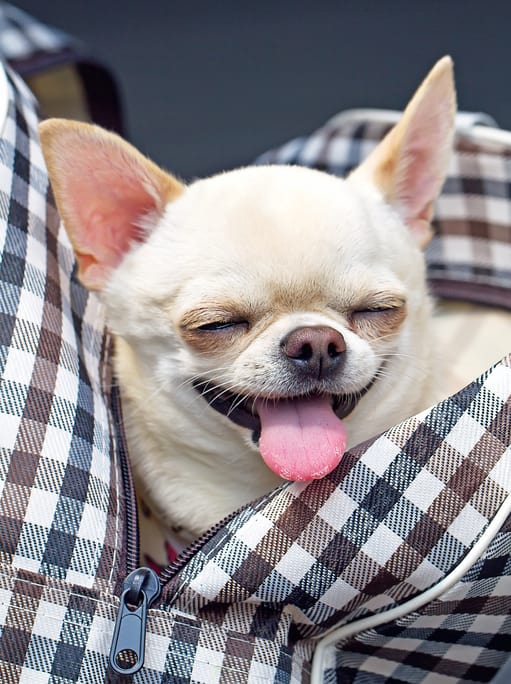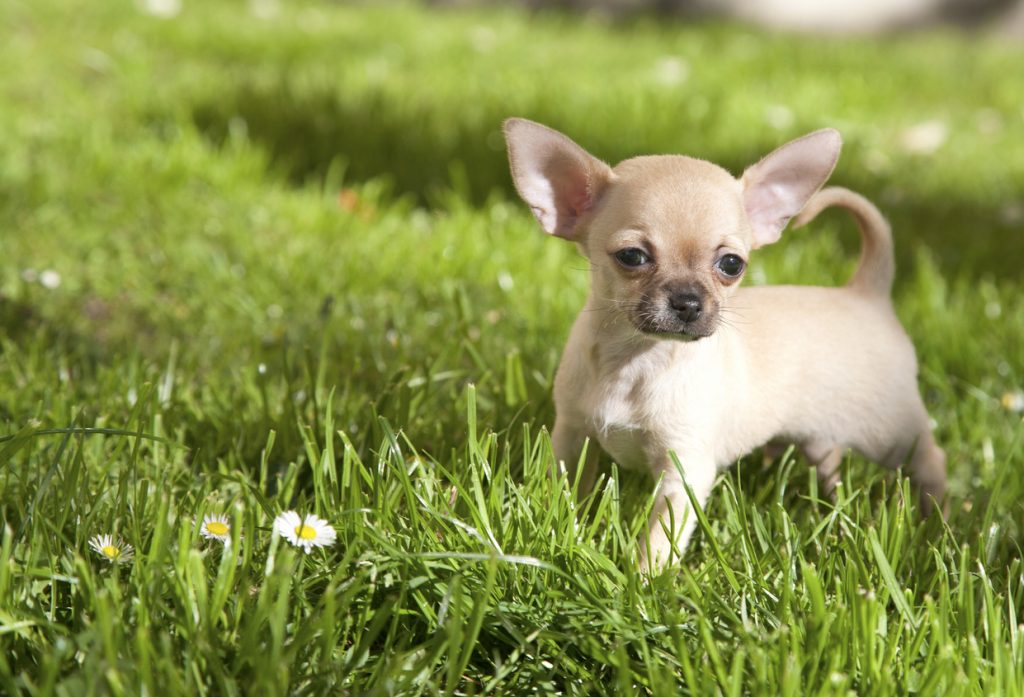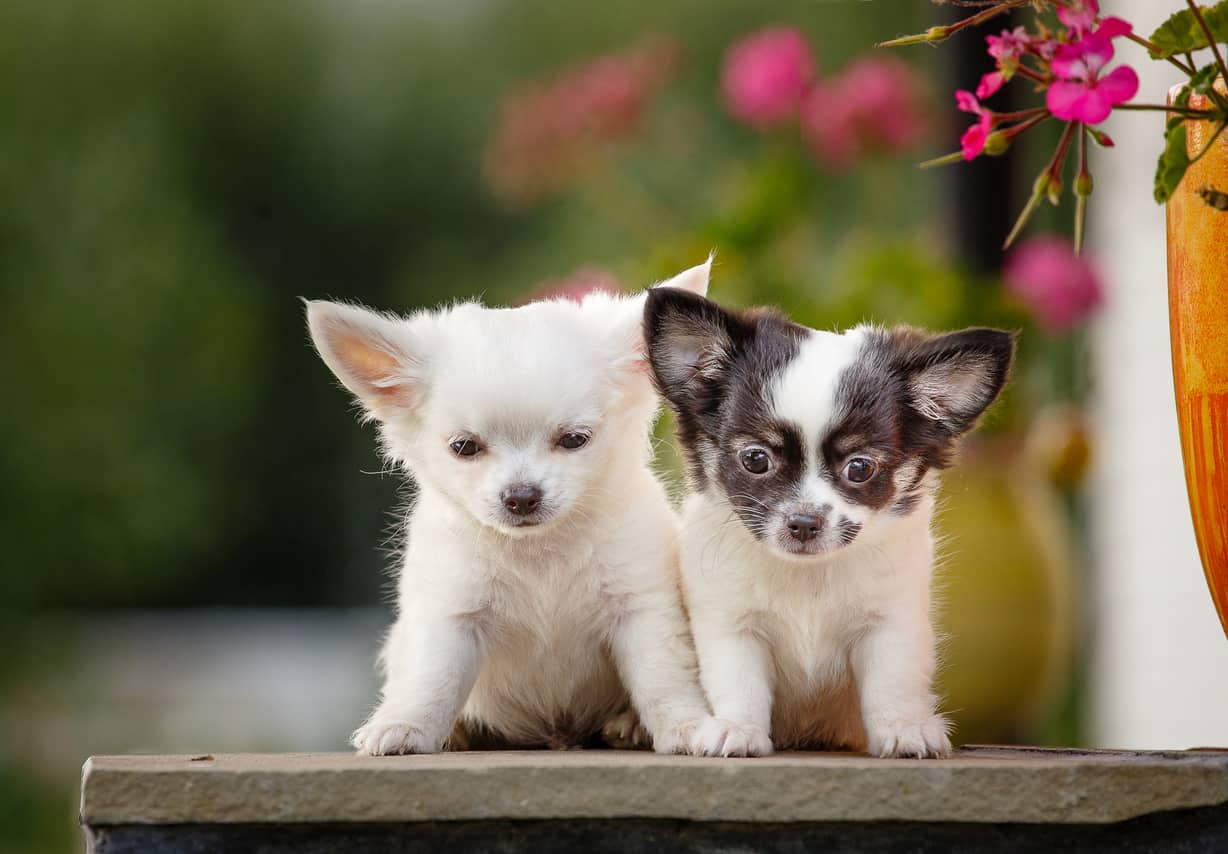You may have heard of the adage ‘big things come in small packages’ – the Chihuahua is a living embodiment of this phrase! Named after the Mexican state of the same name, Chihuahuas are one of the most popular dog breeds in the world today, particularly among toy breeds.
Chihuahuas are extremely loyal to their family, but can have a jealous streak when it comes to other pets in the home. They require plenty of obedience training, but can make the ideal lapdog if you demonstrate patience.
In this guide, we’ll look at the characteristics of the Chihuahua, discover their ancient origins in Central America, and answer some frequently asked questions about this tiny breed.
Chihuahua breed characteristics
- Chihuahuas are approximately five inches in height, and typically weigh between just two and six pounds.
- Chihuahuas come in several colors – fawn, white, blonde, black and tan, patched, and other colors.
- In dark-colored Chihuahuas, the eyes and nose are similarly dark; lighter-colored chihuahuas have a lighter complexion.
- This breed often becomes jealous of other pets, and can be reluctant to go outside – particularly in cold or wet weather. They can be hard to housebreak.
- These dogs come in two varieties – short-haired and long-haired. The short-haired Chihuahua has a soft, short coat, but the long-haired version has longer hair on the ears, chest, stomach, legs and tail.
- Unfortunately, the dome-shaped skull of the Chihuahua makes them prone to head injuries and birth defects such as hydrocephalus.
- The chihuahua is ideally suited in an apartment or indoor environment.
A short history of the Chihuahua
The origins of the Chihuahua dates back thousands of years, and as a result, its exact history is unclear; however, it is likely that the chihuahua descended from the larger Techichi breed, a dog favored by the Toltec civilization in Mexico. When the Aztecs conquered the Toltecs in the 1100s, it is believed that they refined the Techichi into a smaller dog – similar to the Chihuahua we see today.
Although deemed a rarity in the following centuries, the breed first gained prominence among Americans in the 1800s, when several instances were encountered in the Mexican state of Chihuahua. The first registration of a Chihuahua with the American Kennel Club – Beppie – took place in 1908.
Since then, they have been widely-seen in popular culture and make excellent pets for owners who live in cities or apartment complexes, due to their extremely small size.

Health and temperament
Chihuahuas can require lots of veterinary assistance, particularly in birthing and dental care. Some Chihuahuas can have moleras (a soft spot on their skulls), but this is not a birth defect, and will fill in with age. However, care and attention must be taken with Chihuahuas in the first six months of their life until the skull is fully formed.
Dental care is also extremely important for Chihuahuas because of their smaller size, and their jaw size makes for weaker teeth. A combination of daily brushing, dental chews is an effective way for owners to help prevent the accumulation of plaque and tartar to avoid consequences of dental diseases.
Like many other toy breeds, they are susceptible to injuries from falling, and vulnerable to attacks from larger dogs and other animals. This makes them a great indoor pet in an urban environment.
This breed can be notoriously difficult to housebreak. Chihuahuas require plenty of patience – they are extremely loyal to their owners, and owners may find that their Chihuahuas do not fare well with younger children. Like all dogs, they can benefit from high-quality socialization.

Commonly asked Chihuahua questions
How long do Chihuahuas live?
The lifespan of a Chihuahua is one of the longest of all canines, with some living until they are 20 years old.
How many puppies can a Chihuahua have?
This depends on the size of the dog, but typically, Chihuahuas have an average litter size of two to five puppies. In 2018, a Chihuahua in Kansas gave birth to eleven puppies!
Why do Chihuahuas shake?
Chihuahuas have high metabolisms, which can make them shiver when they become nervous, excited or anxious; it also makes it hard for them to regulate their body temperature.
What are Chihuahuas used for?
Centuries ago, small dogs such as Chihuahuas were previously used as living hot-water bottles during illness and injury. They are now used almost exclusively as companion dogs.


You must be logged in to post a comment.